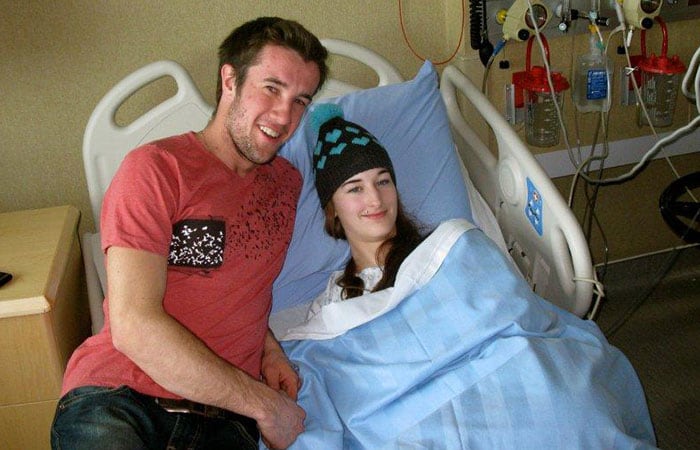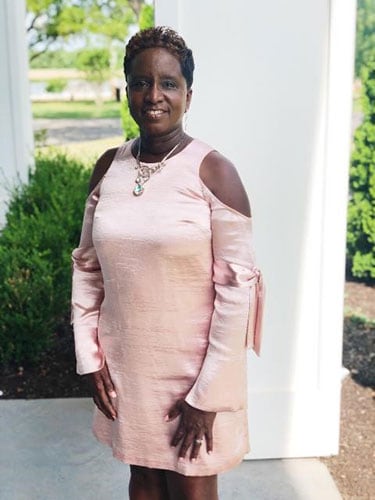At a glance
Anyone can be affected by a blood clot regardless of age, gender, or race. This Blood Clot Awareness Month, learn the signs and symptoms of a blood clot, and find free resources to share with friends, family, and colleagues to help raise awareness about blood clots.

What is a blood clot?
A deep vein thrombosis (DVT) is when a blood clot forms in one of the large veins, usually in the lower leg, thigh, pelvis, or arm. A blood clot can partially or completely block blood flow in the vein. When a DVT is left untreated, a part of the clot can break off and travel to the lungs, causing a blockage known as a pulmonary embolism (PE).
Why is it important to learn about blood clots?
In the United States, an estimated 900,000 people are affected by a blood clot every year, yet they are often underdiagnosed. Blood clots can cause serious medical conditions that can lead to illness, disability, and even death if not treated early. Blood clots can affect anyone, but certain risk factors such as pregnancy, cancer and its treatment, and hospitalization can increase a person's risk for a blood clot. It's important to know the signs and symptoms of a blood clot so that you know to seek medical treatment as early as possible.
Knowing the symptoms of a DVT or PE can help alert you to seek medical treatment as early as possible, although they sometimes occur with no symptoms.
Common signs and symptoms of a DVT include:
- Swelling of the affected area
- Pain
- Tenderness
- Redness of the skin
If you have these signs or symptoms, alert your doctor as soon as possible.
Common signs and symptoms of a PE include:
- Difficulty breathing
- Faster than normal or irregular heartbeat
- Coughing up blood
- Very low blood pressure, lightheadedness, or fainting
Seek medical attention immediately if you experience any of these signs or symptoms.
Stories from blood clot survivors
Read real stories from blood clot survivors to learn about their experiences with a blood clot.
Suzanne's Story

Suzanne has survived two incidents of deep vein thrombosis (DVT) and pulmonary embolism in a period of 9 months.
"My purpose in sharing my story is to raise further awareness about blood clots, as well as provide inspiration to those struggling. The date of my first diagnosis was June 1, 2011, when I learned I had DVTs in my left arm, total occlusion to the subclavian vein (blockage of a deep vein) and an acute pulmonary embolism in my left lung. I was working in a sawmill piling lumber when at work I suddenly I had to hyperventilate just to breathe. I took a few days off work on bed rest and it seemed to settle down. So, I returned to work, and that same night my left arm swelled to at least twice its normal size. I then saw two different doctors before one suggested that they should look for clots, and that's when my clots were found."
Read Suzanne's full story to learn how she survived two pulmonary embolisms.
Ena's Story

Ena Wanliss is living the fulfilling life she always dreamed of. However, she has also faced the daunting experience of travel-related blood clots, not once but twice.
Her first experience with blood clots occurred in 2007. Shortly after returning home from an 8-hour road trip, Ena began to experience a discomfort in her right calf that would not go away. Eventually, she noticed her calf beginning to swell, with increased warmth to the touch. She went to her doctor, who told her, "I don't want to scare you, but you may have a blood clot."
Read Ena's full story to learn about her experiences with travel-related blood clots.
Joe's Story

"In the fall of 2004, I was a senior in college. I was living away from home, about a 7-hour drive. I had a terrible pain in my leg, and my leg was swollen, so I went to my university's Student Health Center. The staff asked about any physical activity in the preceding days, and I recalled that I had been throwing a football around with some classmates recently. They diagnosed a sprain or muscle strain and gave me some ibuprofen. Over the coming days, my symptoms worsened, and the leg became discolored, purple, and more painful. My leg became swollen to the point where I had to borrow a friend's crutches to get around. I should have gone back to seek further medical attention but did not. As the days turned to weeks the pain subsided somewhat, and I adjusted to a new normal of my leg being sore and swollen."
Read Joe's full story to learn what happened next.
More resources
Stop the Clot, Spread the Word® campaign resource toolkit
The Stop the Clot, Spread the Word campaign, a joint effort of the National Blood Clot Alliance and CDC, is a digital, multimedia public health awareness campaign. It provides general information about the risks, signs, and symptoms of blood clots and the important steps to take to prevent them.
Watch a video to learn general information about blood clots.
The campaign also includes tailored information for groups who are at greater risk for developing a blood clot:
- People who are in the hospital or recently were hospitalized
- People who are expecting or recently had a baby
- People being treated for cancer
Check out the Stop the Clot, Spread the Word® campaign resource toolkit to find free, sharable resources such as:
- Educational videos
- A public service announcement
- Infographics
- Downloadable print materials
- Audio news releases
- Sample social media posts for friends, family, and colleagues
E-Learning course: Stop the Clot®: What every healthcare professional should know
This free, self-paced, e-learning course provides healthcare providers with current information on assessing, treating, and managing patients who have blood clots and clotting disorders. Continuing education (CE) credits are available. Register and access the e-learning course here.
What you can do
- Share the information and resources here with friends, family, and colleagues to help increase awareness about blood clots.
- Learn more about blood clots on CDC's blood clots web page.
- Read more real stories from other blood clot survivors.
- Follow us on X (formerly Twitter) at @CDC_NCBDDD for the latest news and updates.
